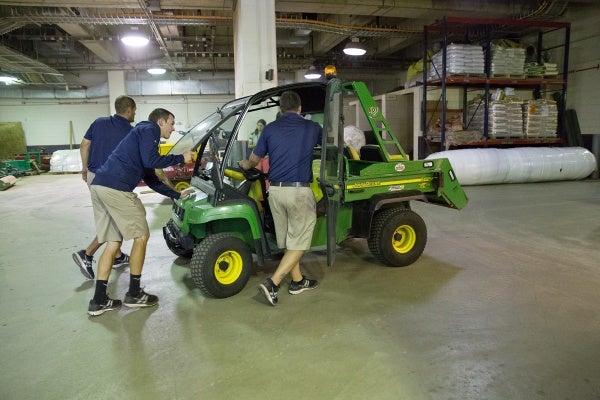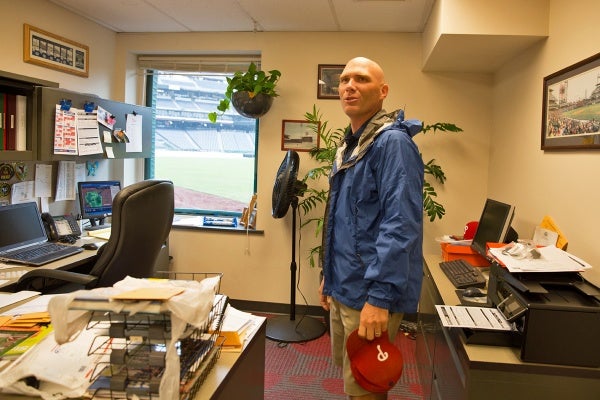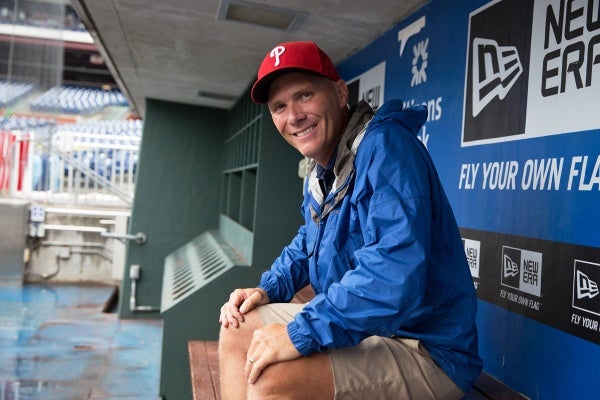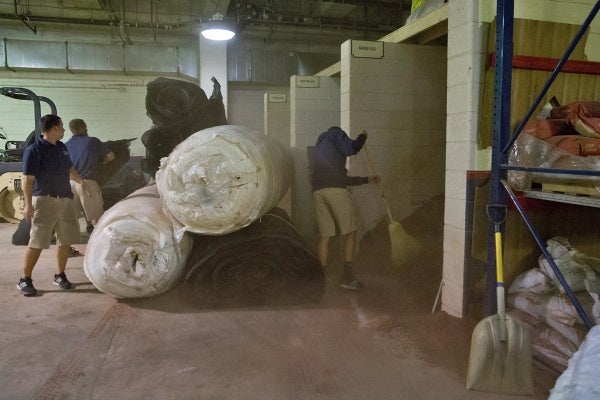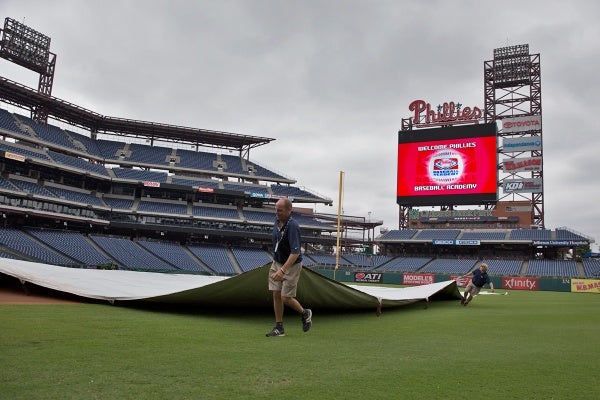On the field with the Phillies groundskeeper [photos]
The Phillies might not look like a championship team right now, but their groundskeepers do.
Mike Boekholder has been working in professional baseball for twenty years. He speaks the language of the Phillies.
“We’re real proud of the work they do,” said Mike Boekholder, the chief groundskeeper at Citizens’ Bank Park. “They put in 110 percent effort for us all the time.”
Boekholder has a full-time staff of five people working for him, which swells to two dozen people on game days. His sole responsibility it making sure the 2.3 acres of grass is perfect.
“Our job is to prepare their office for them, so they can give 110 percent,” the MLB green thumb said of the Phils. “I’m sure when you go into your office at work there’s a certain way you like things on your desk. This playing surface is their desk, our job is to set it up for them.”
Last year the stadium switched from Bluegrass to a hybrid Bermuda grass, Riviera Bermuda. It thrives in the heat of a Philadelphia summer. Unfortunately, the summer has not been all that hot — instead it’s been on of the wettest summers on record.
“It’s growing, but not growing very fast. We’re having a heck of time keeping the growth of the plant up with the amount of wear and tear the players are putting on it,” said Boekholder, who calls the grass a “skin.” Underneath the skin are twelve layers of sand, peet moss, gravel, and crushed concrete that make the field perfectly flat, perfectly drained. The field is about ten feet below the water table – if it did not drain perfectly, it would flood invariably.
Other baseball fields in the Philadelphia area can’t compare to the quality of the lawn at Citizen’s Bank Park. It doesn’t have to be that way, says Boekholder. Many fields in high school and public parks use synthetic turf or Bluegrass, whose main growing periods are in spring and fall.
“They are using that field constantly in the spring and fall — only able to work on it in the summer,” said Boekholder. “If you’re growing a bluegrass field in this part of the country – which is common — it just doesn’t want to grow that time of year. So the only break they get is during the time of year the field doesn’t want to grow. They are never able to do the work to recover the surface for fall football.”
Boekholder says the biggest bane of his job is not rain, or drought, or players. It’s high-definition television. The super-crisp video resolution accentuates every blemish on his field.
WHYY is your source for fact-based, in-depth journalism and information. As a nonprofit organization, we rely on financial support from readers like you. Please give today.


